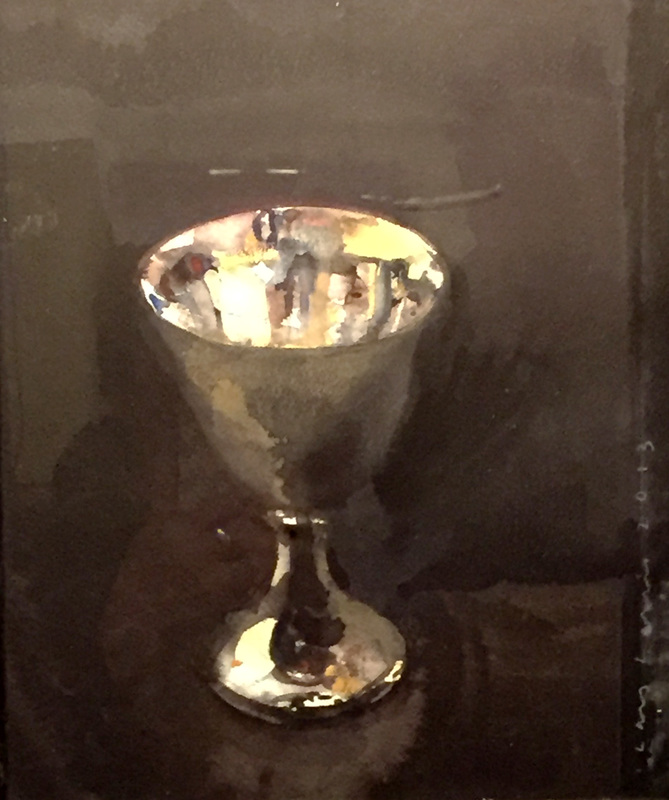The most important thing about shadows is that they have no substance.
The key to making weightless shadows is to apply the paint with a wet brush. Make a big puddle of your color and dip into it often, so that each stroke flows freely into the others.
Okay, then, what about color? Generally, shadows are darker, cooler and more neutral than the surface they fall upon. If that surface is already neutral, like a sidewalk, then the shadows are just cooler and darker.
Since the surfaces where shadows fall come in every color, so do the shadows.

John Singer Sargent
See how the shadow changes color as it moves across the path and onto the grass? On the figures, the shadows are warm or cool depending on the direction the planes are facing.
With a transparent medium, it seems possible that the local colors of the grass and the path would show through a single colored shadow enough to be appropriately different. For homework, draw a very simple path with a pronounced local color and different colored verges on the sides, like the grass and gravel in Sargent's painting. Beside the path, add something that would cast a shadow across path, verge, and anything else you want to include (imagine, instead of the potted plants in the Sargent there could be a pink stucco wall that the shadow would climb)
Put down a wash for each local color in your scene. Then mix up an all-purpose shadow color and paint the shadow as a second layer on top of the surfaces you are depicting.
Now make the same drawing and first-layer washes. This time, mix a separate shadow color for each surface and connect them to make a continuous shadow, as Sargent did.
Did both approaches work? Do you have a preference?
If you have time, experiment with the color of the shadows. Can the shadow be a different color than the sunlit parts of a surface? How different? Can there be more than one color in shadow even when the surface material doesn't change? Bring everything to our critique, and hope for sunshine!




















